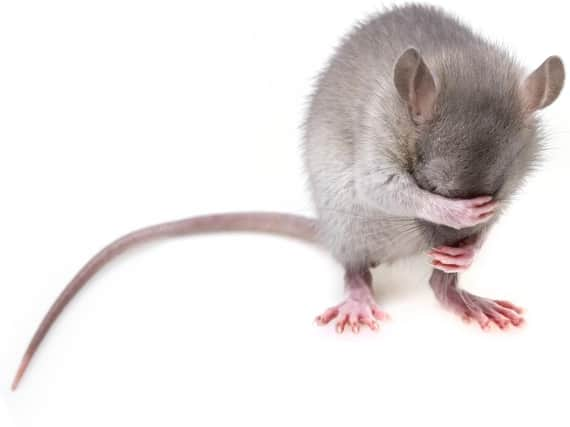Doctor's column: Mice, men, and emotional responses


They are the emotions of happiness, sadness, fear, surprise, anger and disgust, writes Dr Keith Souter.
In the new normal when we have to wear face masks in public situations, we are limiting the facial expressions we communicate with to the upper face. This can have a serious impact on people with hearing problems who may rely on lip reading and interpreting facial expressions.
Advertisement
Hide AdAdvertisement
Hide AdMost animal owners would say they get to know their pets and can tell when they are experiencing certain emotions. Yet it is not an easy matter and not everyone would accept it.
Yet the question whether animals register emotions through their expressions has great potential importance in science and medical research. One recent study looked at whether it is possible to determine emotions in the expressions of mice.
Using carefully designed experiments they gave mice experiences designed to produce distinct emotions. Sugar water evoked pleasure, a slight shock to the tail triggered pain, bitter quinine water created disgust, a dose of lithium chloride evoked nausea, and being put in an environment where tail shocks previously had been delivered sparked fear.
For each experimentally induced emotion stimulus, high-speed video cameras captured subtle movements in the mice’s ears, noses, whiskers and other parts of the face.
Advertisement
Hide AdAdvertisement
Hide AdMachine learning techniques were able to spot subtle face movements that came with good or bad experiences.
On the face of a mouse drinking sweet water, equated with happiness, the ears move forward and folded at the back toward the body, and the nose moved forward toward the mouth. Bitter quinine, by contrast, caused the ears to shoot straight back, and the nose to curl slightly backward.
Other analyses showed that activity of nerve cells in the insular cortex of the mice’s brains also changed with distinct emotions. These cells deep in the brain are known to be involved in human emotions, too.
The scientists say that this could be a game changer for neuroscience research into such emotional states as depression and anxiety.